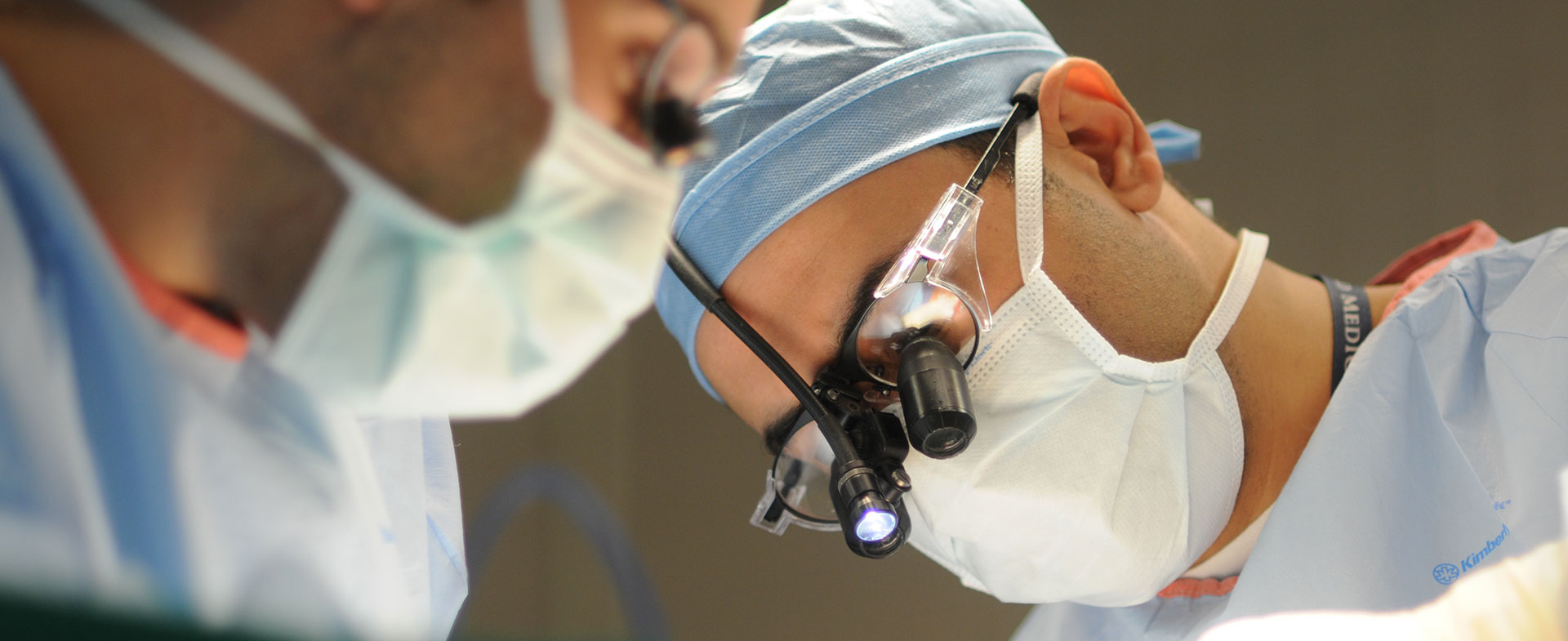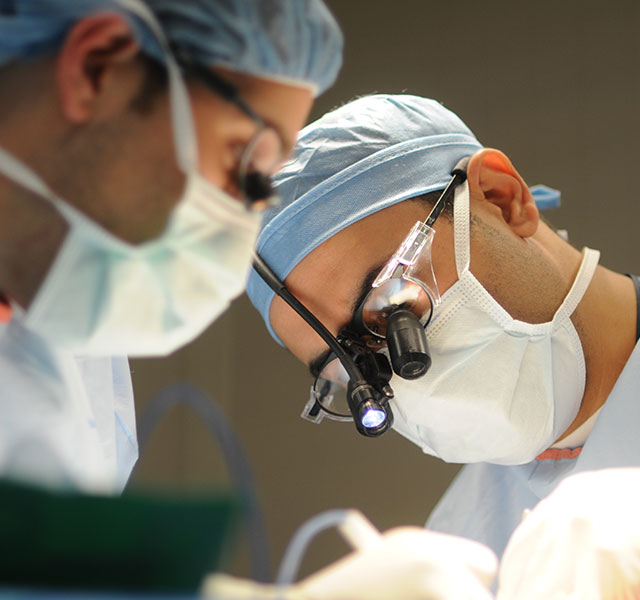People who are diagnosed with cancer—especially head and neck cancers—may worry that their treatments will be deformative. It’s not only cosmetic fears: removing tumors from areas like the tongue, mouth or cheeks can interfere with eating, talking and swallowing. Luckily, however, reconstructive surgery can be performed for both cosmetic and functional purposes.
“There are several methods, from simple to complex, that can be tailor-fit to each patient’s specific needs,” says Suhael Momin, M.D., a head and neck cancer surgeon at Henry Ford Health. “But first, we have to set the groundwork: We need to know the patient’s expectations. What are they trying to achieve, cosmetically and functionally? Sometimes, depending upon a patient’s age and condition, they won’t be able to tolerate a long surgery, so we have to use a less invasive option. The complexity of the reconstruction depends upon how big the defect is.”
Here, Dr. Momin shares four methods of reconstruction, from least to most invasive.
Prosthetics
In certain cases, depending upon the size of the tumor, entire body parts must be removed. Man-made parts, called prosthetics, can be made to replace them. Some prosthetics (in cases like breast cancer) are inserted into the body, and some (like nose cancer) are external, which means they can be taken on and off.
“Patients can have their prosthetic nose matched to their skin color,” says Dr. Momin. “Prosthetics can help the patient feel as though they look like themselves, and it doesn’t require reconstructive surgery.”
Skin Graft
With tongue cancers that have small defects, you can just suture (or stitch up) the tissue back together and patients will be able to talk and swallow with no problem. But with bigger defects, doctors may perform a skin graft.
“We’ll take a piece of skin from somewhere in body that has excess skin and suture it to the defect,” says Dr. Momin. “We’ll put what we call a bolsterer in to help push that tissue against the wound bed. The patient will have stitches for about 7 days or so. The body, at that point, should incorporate the blood supply to that skin, and we can remove the stitches so the patient will be able to talk and eat.”
Local Skin Flaps
Local skin flaps are mainly used for smaller surgical defects that involve the face or nose, usually from skin cancer removal. This procedure involves taking some of the skin from an area around the defect and rearranging it to fix the hole.
“The nice thing about this type of reconstruction is that it’s a lot less time consuming than more involved reconstructive surgeries—it’s an out-patient procedure,” says Dr. Momin. “And often times, the color matches are good because you’re just taking tissue from one part of the face and putting it in another part of the face, versus taking tissue from the leg or thigh and putting it into the face, where the color match isn’t as precise.”
Free Tissue Transfer
“A lot of the reconstructive surgeries we do are free tissue transfers,” says Dr. Momin. “In a free tissue transfer, you take tissue from other places in the body and use it to reconstruct the area where the tumor was taken out. For example, if the jawbone needs to be reconstructed, we may take bone from the fibula (or lower leg bone), and use that for the jawbone reconstruction, and then take skin from the lower leg and use that to line the jaw area.”
Free tissue transfers are generally longer, more intricate surgeries. They’re usually performed at the same time of the tumor-removal surgery.
“Once the tumor has been removed, we’ll check the margins to make sure everything’s gone, and then we’ll do the free tissue transfer,” says Dr. Momin. “I once had a patient with an unusual type of cancer that spread to his jawbone—it was a 9-pound tumor. We had to remove the lower third of his face, along with the tongue, and reconstruct it all. This is an extreme example of reconstruction, but we were able to help him resume his life, which is such a rewarding feeling. 3 months after reconstruction, he was able to talk and eat without assistance.”
To make an appointment with a cancer specialist, visit henryford.com/cancer or call 1-888-777-4167.
Reviewed by Suhael Momin, M.D., a head and neck cancer surgeon who sees patients at Henry Ford Cancer - Detroit and Henry Ford Medical Center - Lakeside.



